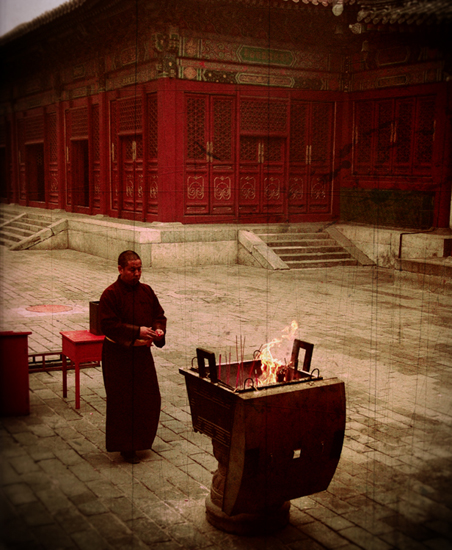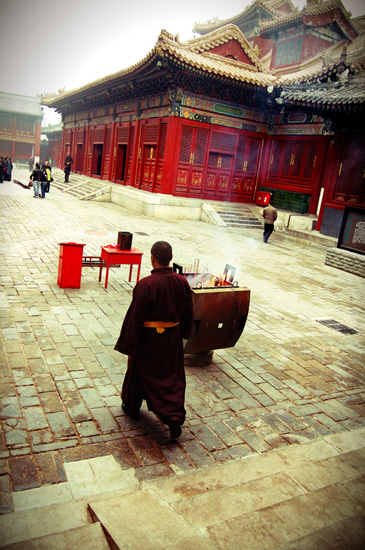

The Yonghe Temple (Chinese: 雍和宫, “Palace of Peace and Harmony”), also known as the Yonghe Lamasery, or popularly as the Lama Temple, is a temple and monastery of the Gelug school of Tibetan Buddhism located on 12 Yonghegong Street, Dongcheng District, Beijing, China. The building and artwork of the temple is a combination of Han Chinese and Tibetan styles. This building is one of the largest Tibetan Buddhist monasteries in China proper. The current abbot is Lama Hu Xuefeng.[1]
Building work on the Yonghe Temple started in 1694 during the Qing dynasty on the site where originally stood an official residence for court eunuchs of the Ming dynasty.[2] It was then converted into the residence of Yinzhen (Prince Yong), the fourth son of the Kangxi Emperor. The Kangxi Emperor awarded this building to Yinzhen in 1702,[3] who was at the time a junwang (second-rank prince). Yinzhen moved into this building in May 1703.[3] The Kangxi Emperor promoted Yinzhen from junwang to qinwang (first-rank prince) under the title “Prince Yong of the First Rank” (和硕雍亲王; 和碩雍親王; Héshuò Yōng Qīnwáng; Manchu: hošoi hūwaliyasun cin wang) in 1709. The name of this building was thus changed into ’the Residence of Prince Yong of the First Rank’ (雍親王府) in the same year. In 1711, the fourth son of Yongzheng, or the Qianlong emperor, was born in the East Academy (东书院) in this building.
Prince Yong ascended the throne as the Yongzheng Emperor in 1722, and the Residence of Prince Yong of the First Rank was later promoted into the ‘Palace of Peace and Harmony’ (雍和宫). After the Yongzheng Emperor’s death in 1735, his coffin was placed in the temple from 1735 to 1737.[4] Before the Yonghe Temple was converted into a monastery, the Grand Secretariat Ortai had once proposed that Hongzhou (Prince He) should take the Yonghe Palace as his private residence, but this suggestion was denied by the Qianlong Emperor.[3] The Qianlong Emperor, who succeeded the Yongzheng Emperor, gave the temple imperial status signified by having its turquoise tiles replaced with yellow tiles which were reserved for the emperor. In 1744, the Qianlong Emperor issued an edict of converting the Palace of Peace and Harmony into a lamasery, and the following Buddhābhiṣeka (开光 Kaiguang) of the Buddhist figure was executed in 1745.[4]
Subsequently, the monastery became a residence for large numbers of Tibetan Buddhist monks from Mongolia and Tibet, and so the Yonghe Lamasery became the national centre of Lama administration. Since 1792, with the foundation of the Golden Urn, the Yonghe Temple also became a place for the Manchu government to exert control over the Tibetan and Mongolian lama reincarnations.
The temple was the site of an armed revolt against the Chinese Nationalist government in 1929.[5]
After the Chinese Civil War ended in 1949, the temple was declared a national monument and closed for the following 32 years.[6] It is said to have survived the Cultural Revolution due to the intervention of Premier Zhou Enlai. Reopened to the public in 1981, it is today both a functioning temple and highly popular tourist attraction in the city.